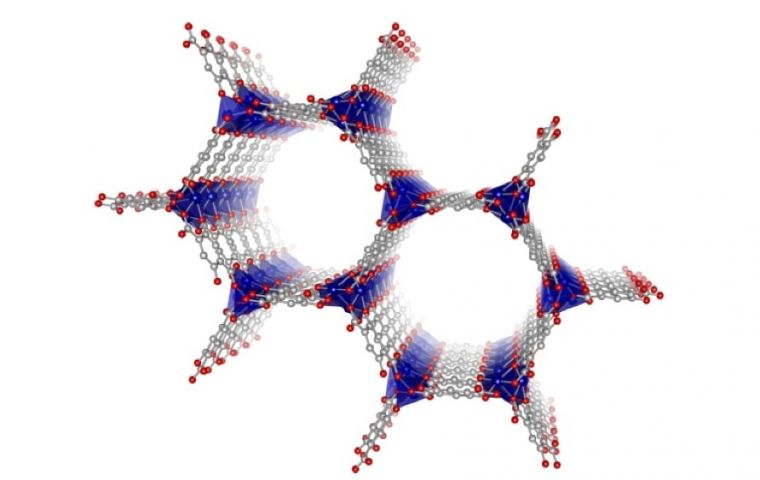MercoPress. South Atlantic News Agency
MOFs' potential earns researchers the Chemistry Nobel Prize
 MOFs have not yet achieved widespread industrial use but have tremendous potential
MOFs have not yet achieved widespread industrial use but have tremendous potential The 2025 Nobel Prize in Chemistry has been awarded to Richard Robson (UK), Susumu Kitagawa (Japan), and Omar Yaghi (USA)—for their foundational work on Metal-Organic Frameworks (MOFs), the Swedish Academy announced on Wednesday.
MOFs are highly ordered, three-dimensional, porous crystalline networks with an enormous internal surface area. They are constructed using a simple principle: metal atoms that act as fixed “nodes” are connected by organic molecules (linkers), forming a predictable, geometric framework.
In the 1980s, Robson was the first to successfully realize the MOF concept in the lab, demonstrating that metal ions and specially designed organic linkers could self-assemble into a highly ordered crystalline structure with large internal voids (porosity).
His work confirmed the principle of utilizing coordination chemistry to construct predictable, extended three-dimensional structures.
In 1997, Kitagawa created the first MOF that retained its shape and stability even after the solvent used in its synthesis was removed from the pores.
This discovery was crucial, as it demonstrated the potential for MOFs to store and release gases (like methane, nitrogen, or oxygen), paving the way for practical applications like gas storage and molecular separation.
He also developed the concept of “flexible” or “breathing” MOFs—materials that change shape in response to external stimuli like pressure or the presence of guest molecules.
Yaghi gave the material class its permanent name, “Metal-Organic Frameworks” (MOFs), and was driven by the idea of creating materials with predictable, custom-designed structures.
In 1999, he introduced MOF-5, which set a new record with a gigantic internal surface area of 2,900 square meters per gram—more than three times the best existing alternative (zeolites).
Yaghi proved that MOFs could be rationally designed (the “Lego principle”), allowing researchers to precisely control pore size and function by selecting different organic linkers.
Although MOFs have not yet achieved widespread industrial use, their unique properties—especially their vast internal surface area and tunable structure—promise to transform several fields.
These potential applications include removing CO2 from the air, storing hydrogen for fuel cells, filtering certain pollutants, and accelerating chemical reactions, which would be useful for addressing crude oil or antibiotics in contaminated water.




Top Comments
Disclaimer & comment rulesCommenting for this story is now closed.
If you have a Facebook account, become a fan and comment on our Facebook Page!